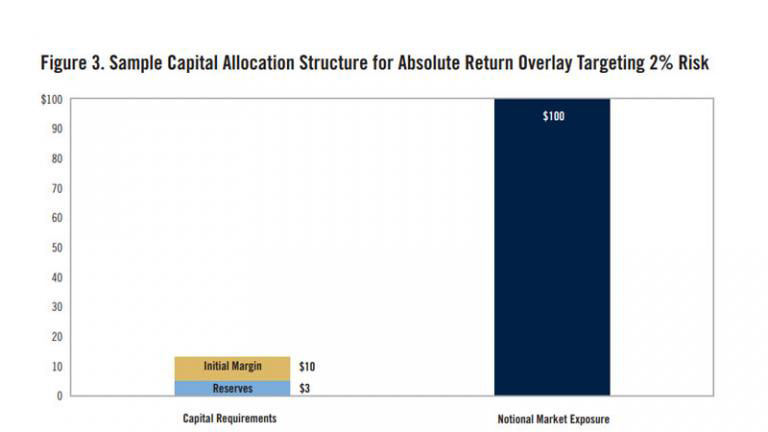Investment Challenge
We believe expected returns on traditional public market investments are likely to be considerably lower over the next 10 years compared to those of the last decade. We think equity returns are likely to be lower given continued expected decline in developed markets’ economic growth, and richer valuations following the strong performance of equity markets relative to underlying earnings. This has not been altered by the impact of COVID-19. In any rational analysis, traditional ways of enhancing those returns are not likely to fill that shortfall. Read our latest Capital Market Assumptions to learn more.
What to do?
Given this challenging outlook, what can asset owners do to better position their portfolios to meet required rates of return without taking on too much undue risk? Below we review three common approaches to enhancing returns through strategic portfolio allocations and introduce an alternative approach – implementing a portable alpha overlay – that goes beyond the portfolio allocation decision to potentially add meaningful excess returns.
What is a Portable Alpha Overlay?
And How Does it Work?
A portable alpha overlay is an uncorrelated and unfunded separate source of excess returns generated by active management. Alpha strategies that use liquid derivative instruments do not have to be fully funded. Consider an absolute return strategy targeting a 0.5 Sharpe ratio implemented through liquid futures and currency forwards. An investor targeting 2% risk can expect about 1% alpha over the strategic allocation. This can be achieved by deploying 100% notional and dedicating only about 13%* of capital to the strategy. The figure below shows a typical breakdown of the collateral requirements for such a strategy. Given our assumptions, the expected return on capital^ is about 8%.
Through a portable alpha overlay, PGIM Quant offers an uncorrelated and partially funded separate source of excess return generated by active management. Investors can capture unfunded alpha opportunities in their portfolio with cash-efficient instruments without distorting their strategic asset allocation.
Sample Capital Allocation Structure for Absolute Return Overlay Targeting 2% Risk
Key Characteristics of Portable Alpha Overlays
Multi-Asset Absolute Return Strategies
These strategies seek to capture risk premia and mispricings across asset classes and may provide a good fit for portable alpha overlays. The key features of these strategies include:
- Investing in highly liquid instruments across a variety of asset classes, such as country equities, bonds, currencies and commodities.
- Using instruments that are highly cash efficient, are relatively low cost, are high-capacity, and have attractive liquidity terms.
- The portfolio is naturally diversified away from traditional sources of risk by going long where there are attractive opportunities across the capital markets, and going short unattractive opportunities.
- Capitalizing on sources of returns that are generally less accessible, and which actually diversify the portfolio away from traditional asset classes into new and more market-neutral opportunities.
There can be no guarantee that this objective will be achieved.
Meet the team

Marco Aiolfi
Head of Multi Asset

Lorne Johnson
Head of Multi-Asset Portfolio Design
Related
-
Absolute Return Overlay Solutions: The Best Hope?Multi-Asset team explains potential benefits of portable alpha overlays, which can meaningfully enhance returns over strategic allocations.
Read More
-
Multi-Asset Private Credit Comes to the ForePhil Waldeck, CEO of PGIM Multi-Asset Solutions, discusses the evolving multi-asset private credit landscape with IPE.
Read More
* We assume the initial capital commitment is set using a 5% initial margin for 100% notional exposure, and that when market volatility spikes, the initial margin can double. We set aside an amount equivalent to the expected maximum drawdown of the strategy (defined as 1.5 times the target risk) to buffer against margin calls.
^ Return on capital is computed as expected alpha over initial capital commitment. In our example of a strategy targeting 2% risk with expected alpha of 1% (Sharpe ratio of 0.5) and an initial capital commitment of 13%, the expected return on capital is computed as 1%/13%=7.7%.
Diversification does not protect against a loss in a particular market; however, it allows you to spread that risk across various asset classes.
No investment strategy or risk management technique can guarantee returns or eliminate risk in any market environment.




